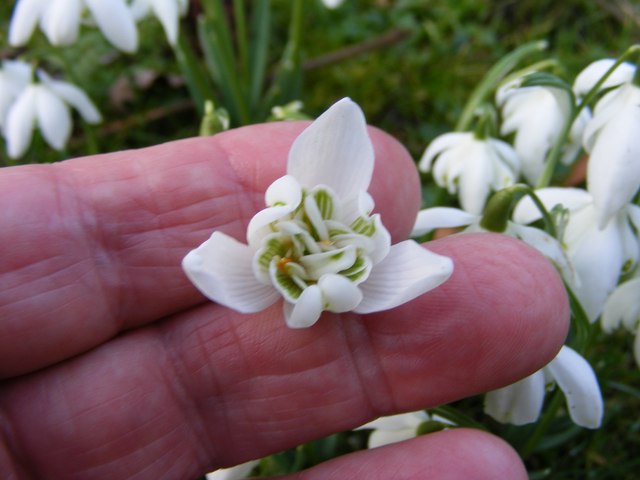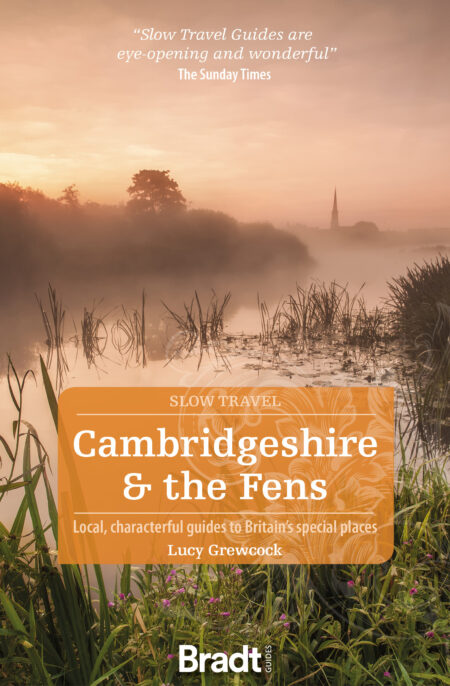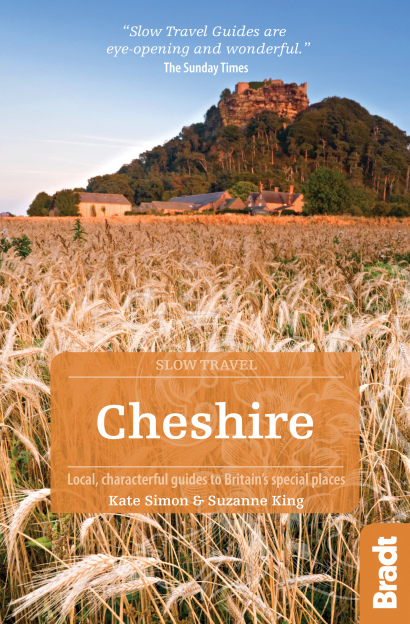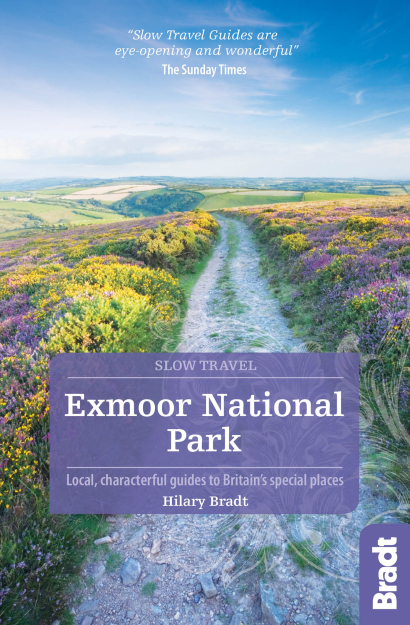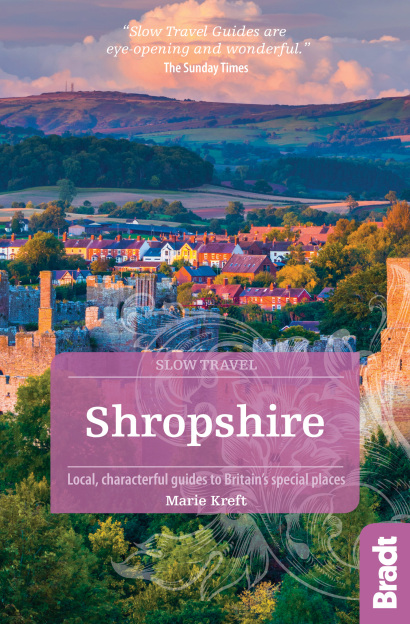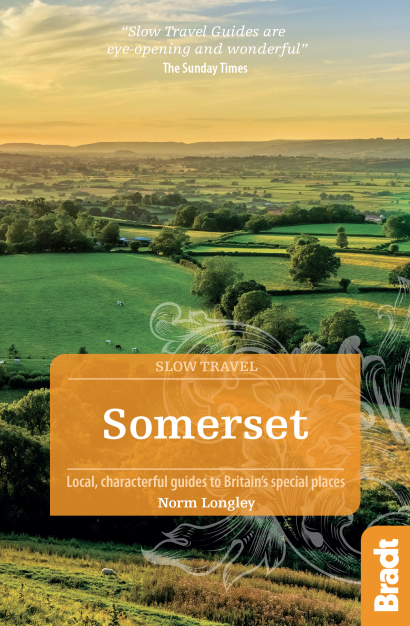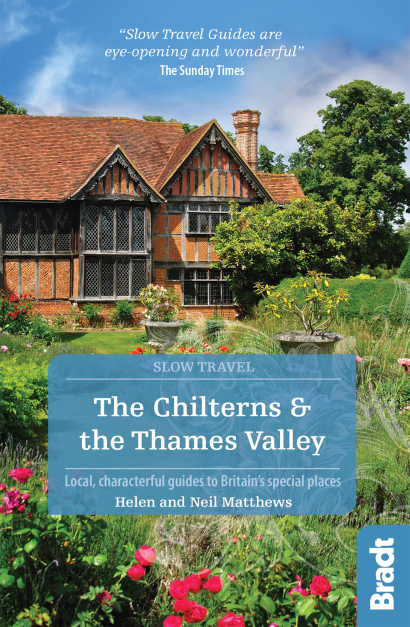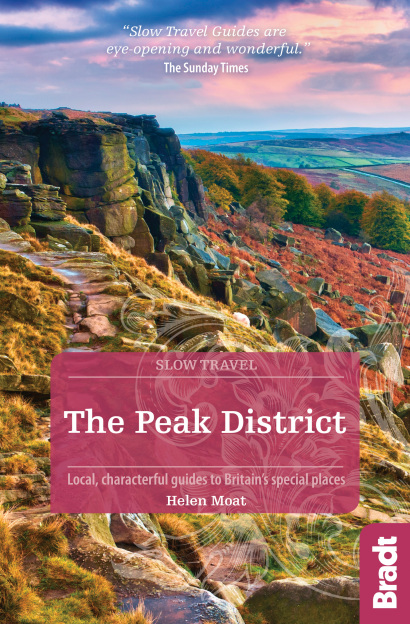It’s always a little harder to find the motivation to get outdoors in colder months, but the sight of snowdrops peeping through in January or February never fails to lift the spirits. Our selection of the best places to locate these beautiful indicators of spring approaching will have you back enjoying nature in no time.
Swyncombe, Oxfordshire
History and nature are intertwined at Swyncombe and it remains one of the best places in Britain to catch a glimpse of these gorgeous white flowers. The early Norman Church of St Botolph, with no tower, was extensively rebuilt around 1850, when the open window where the bell had hung was replaced by stained glass in the form of lozenges, each with a bird figure, highly stylised and strangely posed.
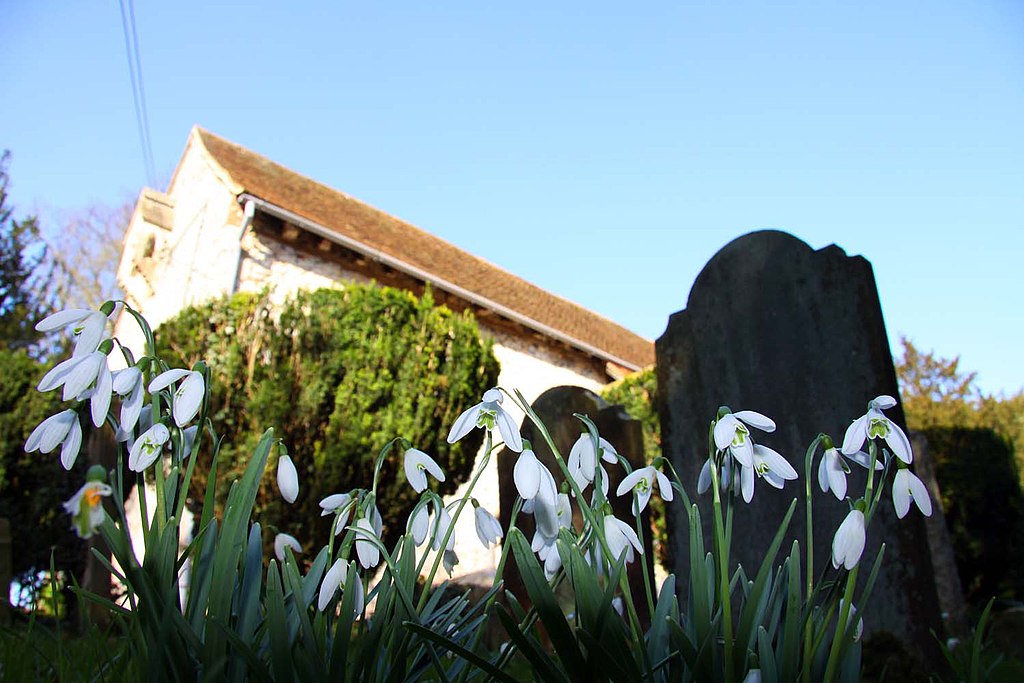
This unique architectural construction makes a striking backdrop for the open days celebrating the arrival of snowdrops held here in early February.
Wheddon Cross and Snowdrop Valley, Somerset
Wheddon Cross is the highest village in Exmoor, a friendly place that gained importance as a major crossroads. The village comes into its own each February when North Hawkwell Wood is carpeted with snowdrops. Snowdrop Valley is owned by the Badgworthy Land Company and is an ESA (Environmentally Sensitive Area). It’s a gentle 45-minute circular walk alongside the River Avill, which used to drive a sawmill; the remains of a weir can still be seen.
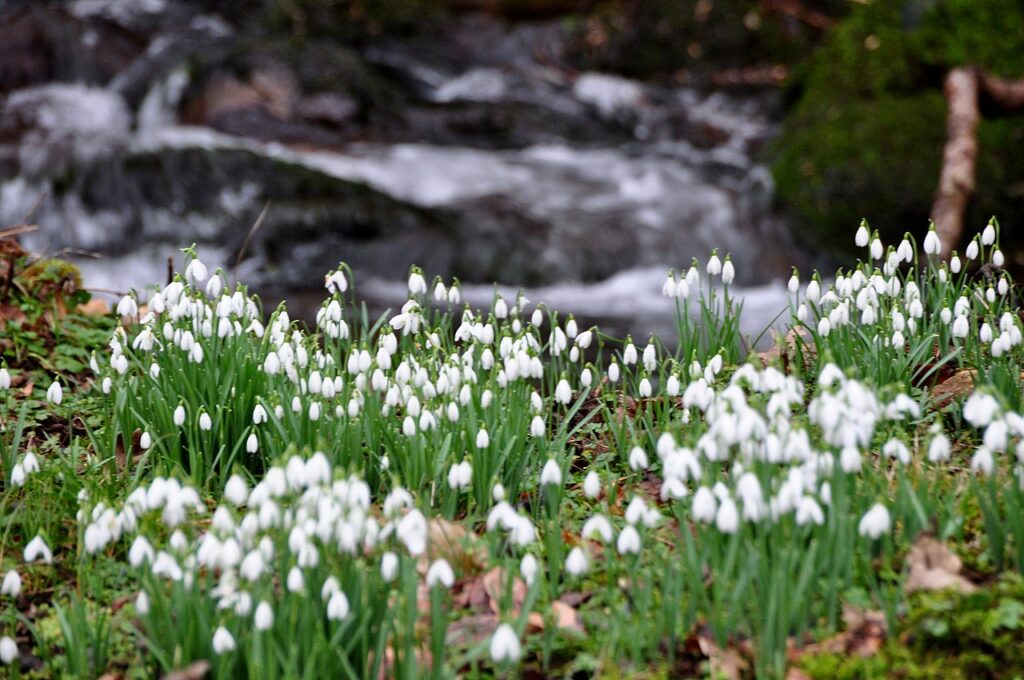
During the snowdrop season, Wheddon Cross’s well-used village hall, Moorland Hall, becomes the Snowdrop Café and hosts fundraising groups to help promote and sustain the beautiful flowers in the region.
Mendip Hospital Cemetery, Somerset
The Mendip Hospital Cemetery is the burial ground for the Somerset and Bath Lunatic Asylum, which opened in 1848 and closed in 1991. The site was almost lost to developers before the Friends of the Mendip Hospital Cemetery group stepped in in 2002 and became its sole custodians. Their stated aim was to preserve the cemetery as a nature reserve and to this end they’ve done a fantastic job.
While the location of a former asylum might not seem like the obvious choice for those seeking out one of nature’s most beautiful phenomenons, from January onwards you’ll find the fields here carpeted with snowdrops.
Hopton Hall Gardens, Peak District
Adjoining the village of Carsington is the hamlet of Hopton, home to the elegant Hopton Hall. While the house is private, the Hopton Hall Gardens are open in January and February so the public can enjoy the profusion of woodland snowdrops that bloom here.
Much work has been done by the latest owners to restore the near-derelict gardens to their former glory, including the formal walled garden, the playful crinkle-crankle wall, ornamental ponds and flowerbeds, wildlife lake, arboretum and pinetum. The various parts of the garden are linked by the Badger, Beech and Woodland paths, along with the Laburnum Tunnel.
Rectory Wood, Shropshire
Located in the sleepy Shropshire village of Church Stretton, Rectory Wood is a wonderful place to relax in nature and take a stroll through the abundance of snowdrops that grow here. In around 1775 the owner James Mainwaring designed a woodland garden here. He was a close friend of Lancelot ‘Capability’ Brown and it is believed that the famous landscape gardener influenced Mainwaring’s design.
Managed as a traditional hay meadow, in addition to the flowers that bloom here in the lead up to spring, the wood is a rich habitat for birds, bats and butterflies.
Colesbourne Park, Gloucestershire
The tiny village of Colesbourne appears on a bend in the river as the Churn turns south. The village is entirely consumed by Colesbourne Park, a 2,500-acre estate with significant acreages of woodland and home of the Lord Lieutenant for Gloucestershire. The park is renowned for its snowdrop collection, with over 200 varieties of the Galanthus bulbs planted throughout.
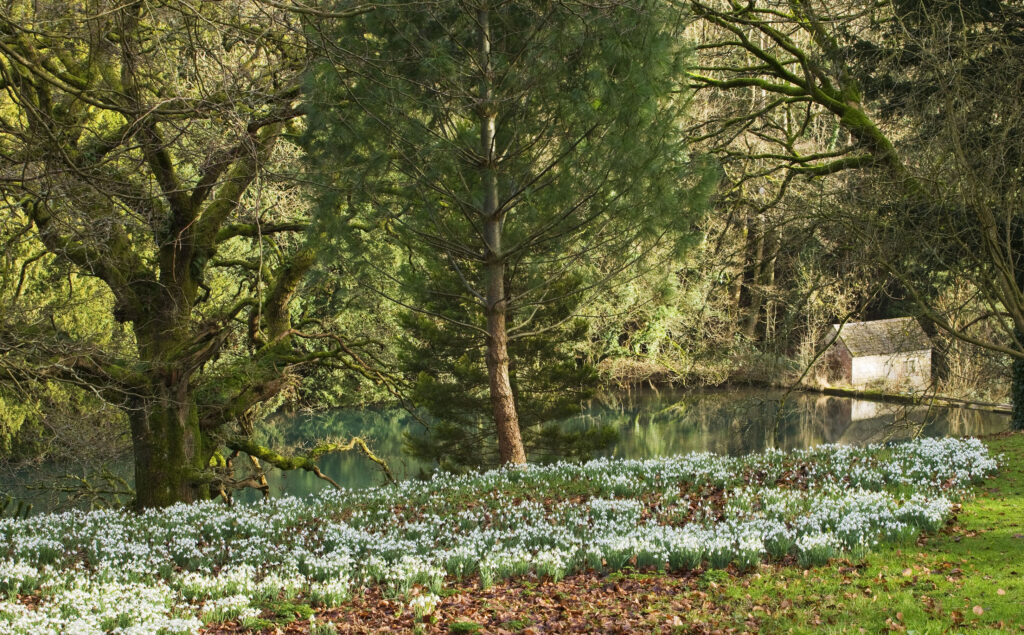
Visitors come from far and wide to wander through the gardens during the Snowdrop Weekends in February, when they can see the church, waterfall, the woodland paths and huge banks of snowdrops fluttering in the breeze. There are lakeside walks too, the bluest of blue waters reflecting further banks of little white stars.
Logan House Gardens, Dumfries and Galloway
The Logan House Gardens are just a few miles south of the Scottish village of Ardwell. Home to a very long tree-lined drive that is replete with a stunning array of snowdrops and daffodils throughout spring, these impressive Victorian gardens make the ideal day trip for those seeking a perfectly curated display of nature.
The Queen Anne House (private) is surrounded by sweeping lawns and splendid woodlands while Logan House has 7 UK champion and 14 Scottish champion trees, all contributing to the description they use of ‘forty shades of green’ and between them representing trees from all over the world.
Lovell Quinta Arboretum, Cheshire
Home to around 2,500 trees and more than 800 different species (including the national collections of pine and ash), the Lovell Quinta Arboretum was created by Sir Bernard Lovell and is a blissfully peaceful place to wander.
While this largely undiscovered park is beautiful at every time of year, there is nothing quite so magical as an afternoon spent strolling through the carpets of snowdrops that bloom here every February. There are maps at the entrance gate to guide you around, along with an honesty box, inviting a £2.50 contribution per person. Worth every penny.
Chippenham Park Gardens, Cambridgeshire
Cambridgeshire’s Chippenham Park Gardens are open to visitors on select days throughout the year, usually coinciding with the winter snowdrop season.
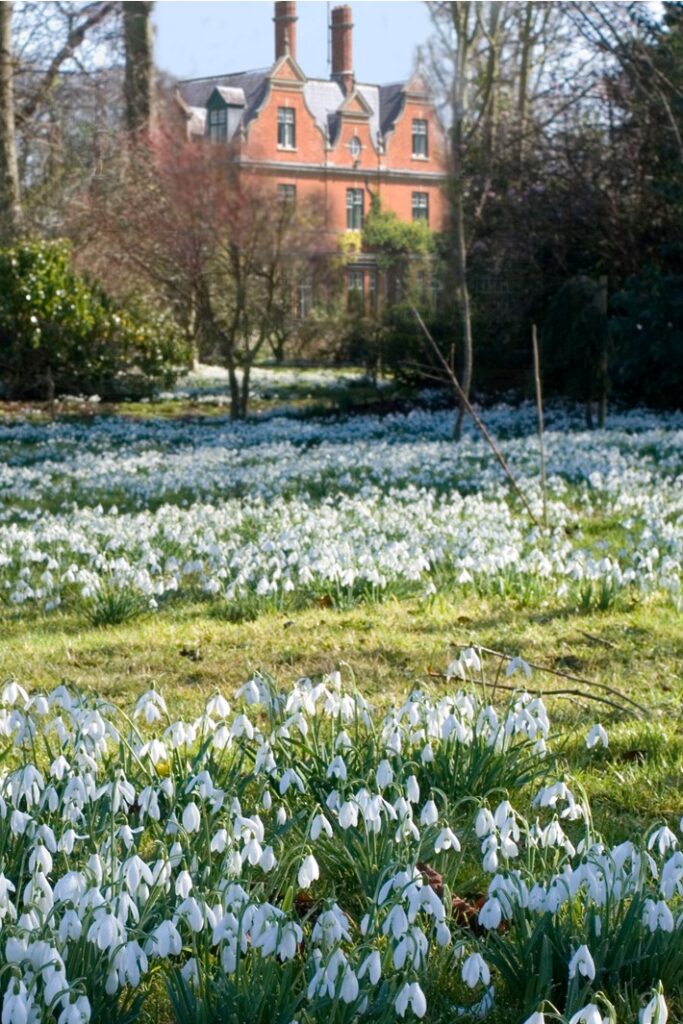
The 40 acres of gardens were designed in an Anglo-Dutch style, with lakes, canals, woodland, formal gardens, summer houses and ornamental grasses, all of which offer ample opportunity to capture the magic of these gorgeous white flowers on camera, or indeed, in memory.
More information
For more information, check out our selection of UK guides:
